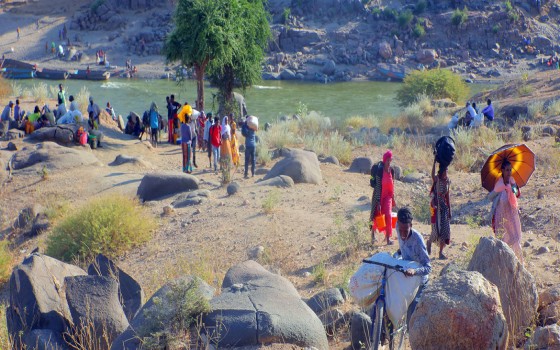
The discovery of a river under the Antarctic ice that is 40 million years old. Prepared by Dr. Abdel Moneim Sidqi, Professor at the Agricultural Research Center - Egypt

- Europe and Arabs
- Sunday , 23 June 2024 11:6 AM GMT
A team of geologists have discovered the remains of an ancient river system that flowed millions of years ago nearly 1,500 kilometers across the massive ice sheet in West Antarctica. The discovery, published in the journal Science Advances, provides insight into Earth's history and hints at how extreme climate change could alter the planet. A team of researchers on a research expedition led by the Alfred Wegener Institute discovered evidence of an ancient river system by studying sediment samples from the Amundsen Sea. This suggests that Antarctica had a temperate climate about 34 million years ago, with dense forests and an extensive network of rivers.
The Earth went through a dramatic period of cooling between 34 and 44 million years ago, which saw carbon dioxide levels drop sharply, leading to the formation of the first glaciers on ice-free Earth. Scientists have long wondered how this event occurred in Antarctica, a continent now dominated by ice. Most of the minerals and fragments collected during an expedition aboard the research icebreaker Polarstern came from a remote source: the mountains of Antarctica on the other side of the continent, thousands of kilometers away.
The uplift of the Trans-Antarctic Mountains created an enormous amount of erosion debris, consisting of impacted and mobile rocks and minerals. The newly discovered river system likely transported this debris a long distance (about 1,500 km) across the West Antarctic Rift System before it It is deposited in the Amundsen Sea. Professor Cornelia Spiegel from the University of Bremen said
West Antarctica had low terrain at the end of the Eocene era. Although located in Antarctica, West Antarctica was not cold enough for permanent ice sheets to form due to its low elevations. In contrast, the mountainous regions of East Antarctica, which had higher elevations and lower temperatures, were already witnessing the beginnings of glaciers at that time.
The existence of such a transcontinental river system shows that large parts of West Antarctica must lie above sea level as broad, flat coastal plains.












No Comments Found